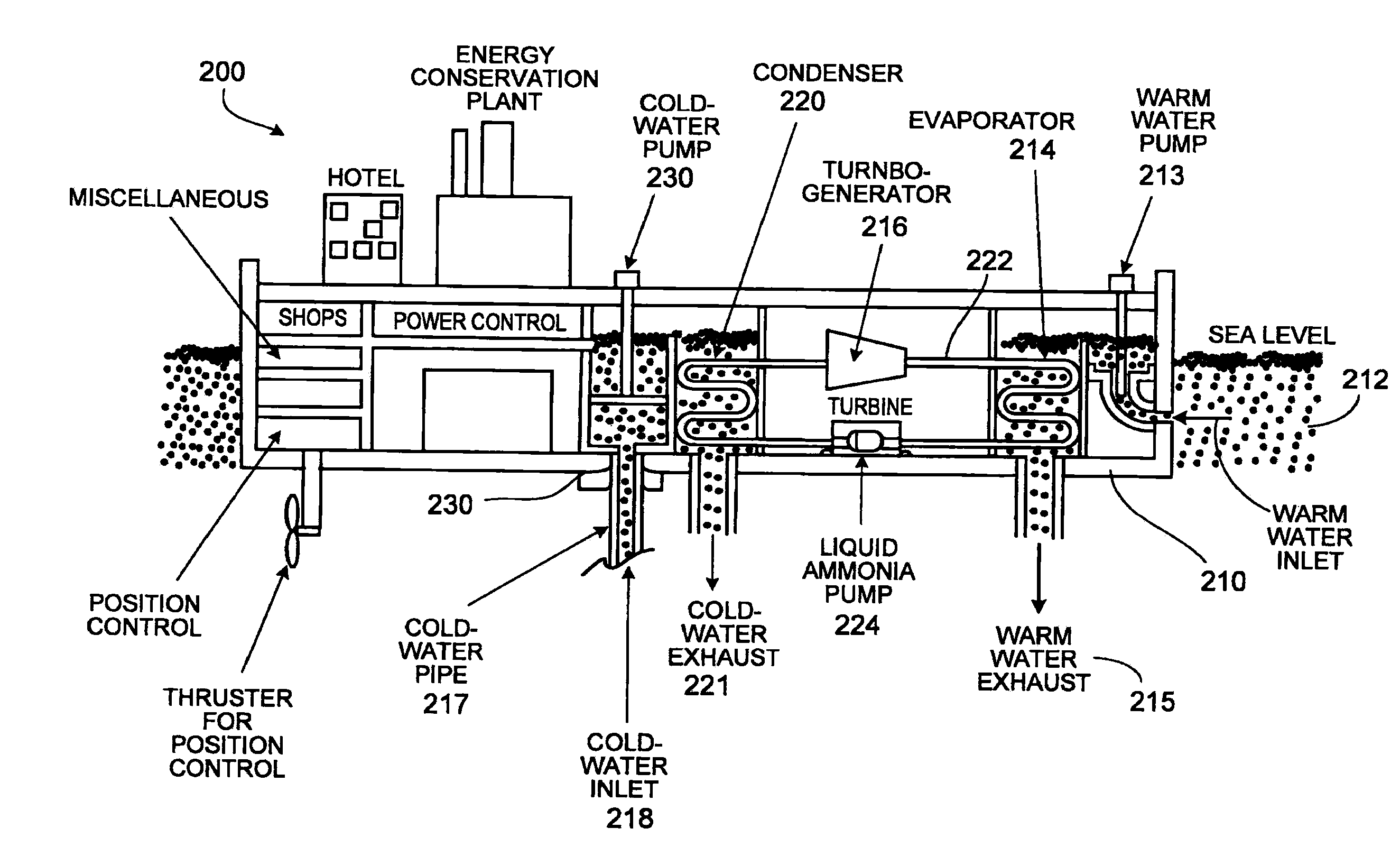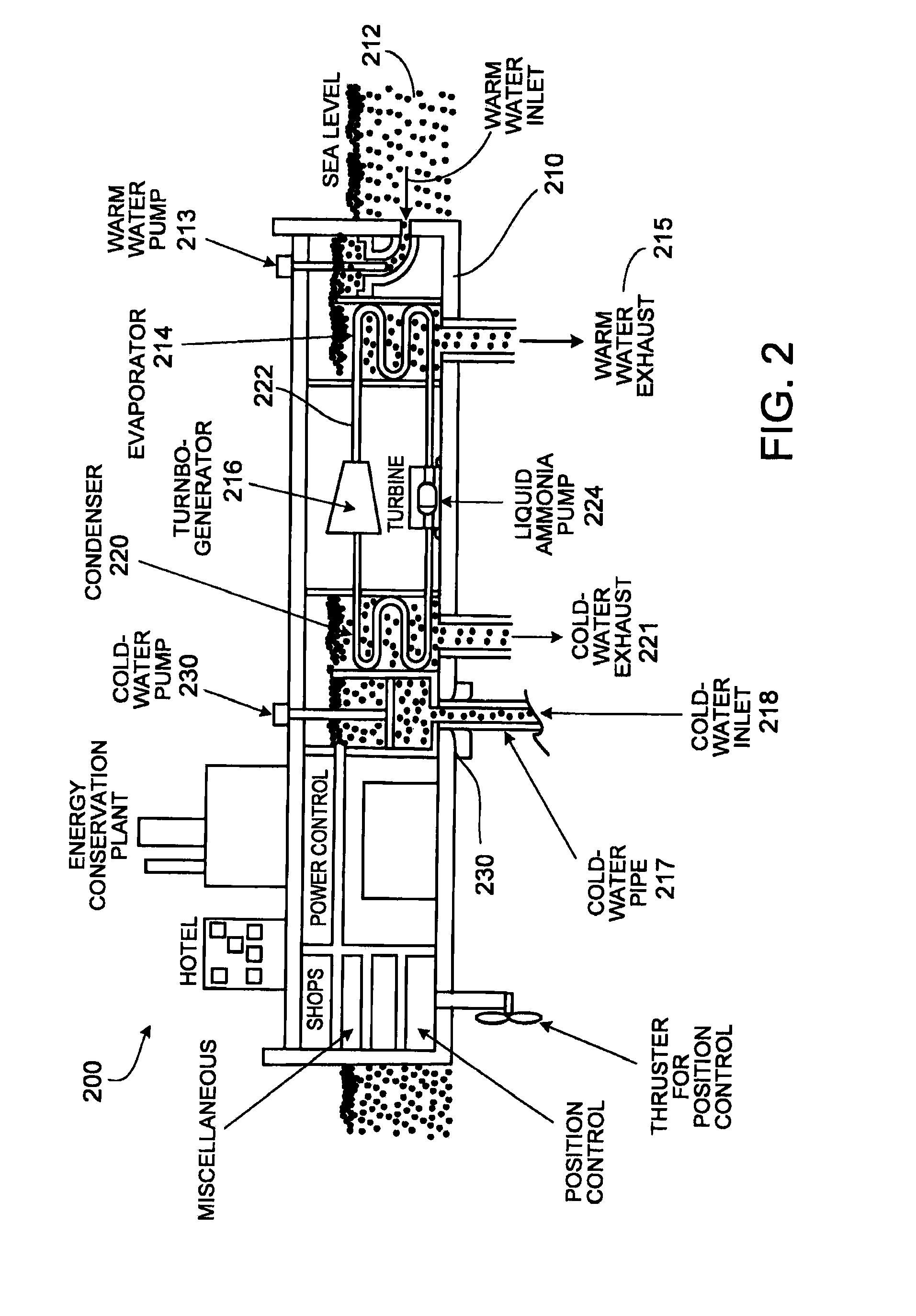Ocean Thermal Energy Conversion Plant
a technology of thermal energy and power plants, applied in indirect heat exchangers, machines/engines, light and heating apparatus, etc., can solve the problems of increasing the cost of fossil fuel extraction, and depleting fossil fuel sources at an accelerating ra
- Summary
- Abstract
- Description
- Claims
- Application Information
AI Technical Summary
Benefits of technology
Problems solved by technology
Method used
Image
Examples
example
Aspects of the present invention provide an integrated multi-stage OTEC power plant that will produce electricity using the temperature differential between the surface water and deep ocean water in tropical and subtropical regions. Aspects eliminate traditional piping runs for sea water by using the off-shore vessel's or platform's structure as a conduit or flow passage. Alternatively, the warm and cold sea water piping runs can use conduits or pipes of sufficient size and strength to provide vertical or other structural support to the vessel or platform. These integral sea water conduit sections or passages serve as structural members of the vessel, thereby reducing the requirements for additional steel. As part of the integral sea water passages, multi-stage cabinet heat exchangers provide multiple stages of working fluid evaporation without the need for external water nozzles or piping connections. The integrated multi-stage OTEC power plant allows the warm and cold sea water to...
example 2
An offshore OTEC spar platform includes four separate power modules, each generating about 25 MWe Net at the rated design condition. Each power module comprises four separate power cycles or cascading thermodynamic stages that operate at different pressure and temperature levels and pick up heat from the sea water system in four different stages. The four different stages operate in series. The approximate pressure and temperature levels of the four stages at the rated design conditions (Full Load—Summer Conditions) are:
Turbine inletCondenserPressure / Temp.Pressure / Temp.(Psia) / (° F.)(Psia) / (° F.)1 Stage137.9 / 74.7 100.2 / 56.52″ Stage132.5 / 72.493.7 / 533′ Stage127.3 / 70.2 87.6 / 49.54″ Stage122.4 / 68 81.9 / 46
The working fluid is boiled in multiple evaporators by picking up heat from warm sea water (WSW). Saturated vapor is separated in a vapor separator and led to an ammonia turbine by STD schedule, seamless carbon steel pipe. The liquid condensed in the condenser is pumped back to the evapora...
PUM
 Login to View More
Login to View More Abstract
Description
Claims
Application Information
 Login to View More
Login to View More - R&D
- Intellectual Property
- Life Sciences
- Materials
- Tech Scout
- Unparalleled Data Quality
- Higher Quality Content
- 60% Fewer Hallucinations
Browse by: Latest US Patents, China's latest patents, Technical Efficacy Thesaurus, Application Domain, Technology Topic, Popular Technical Reports.
© 2025 PatSnap. All rights reserved.Legal|Privacy policy|Modern Slavery Act Transparency Statement|Sitemap|About US| Contact US: help@patsnap.com



